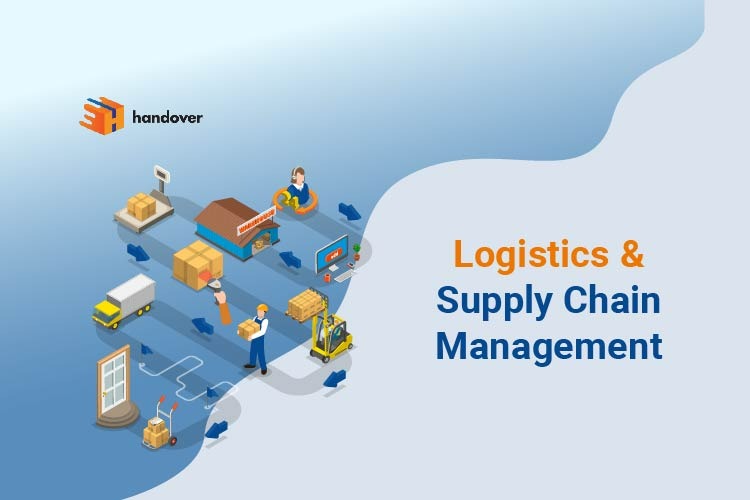Handover news
Blog
Logistics and Supply Chain Management

One of the crucial works of logistics and supply chain management is to provide good delivery experiences to customers. Businesses can easily do the same by organising and planning carefully their logistics and supply chain management. It helps in cost reduction for businesses and enhances customer experience.
One of the primary focuses of the logistics management process is to gather products and deliver them to customers. It encourages successful logistic operations by fulfilling customer requests and meeting industry standards. Here we will detail you on the benefits of successful logistics and supply chain management.
What is Supply Chain Management?
Supply chain management is a process by which delivery service providers link suppliers, retailers and other partners to increase productivity and create value for the end users. The supply chain, which involves many companies, is responsible for raw material flow and making sure an outstanding finished product. Moreover, supply chain managers collaborate with many businesses to ensure that a final product reaches the end users on time and meets all their expectations. Thanks to these managers, we see seamless grocery delivery services in Noida, Ghaziabad, Delhi, Mumbai, Chennai and other places in India. The same remains the case for other product deliveries.
What is Logistics Management?
Logistics is a procedure under which the supply chain is conducted by businesses, including all the actions that make it easier for products to flow from the point of production to the point of consumption. Packaging of products and maintaining efficiency and transportation of goods from the company is a process that falls under the logistic management.
The storage and transportation of goods at various stages of the supply chain are the main procedure of logistics. It is also a branch of supply chain management.
While supply chain management pays attention to optimising profit and maintaining seamless operation of goods, transportation, storing and selling, logistics is focused on minimising the expenses involved in the storage and transit of products.
Explaining Concepts of Logistics & Supply Chain Management
Inventory Planning
Because of the nearly linear relationship between inventory levels and costs, organisations want to keep them as low as possible. By estimating the demand correctly, there shouldn’t be a need for inventory, and the products should flow from warehouses to customers without any problems.
However, in the real world, the predicted numbers may not turn out to be true and inventory needs to be maintained to meet sudden demand. However, overstocks result in higher working capital needs, insurance premiums, and the blocking of resources that could have been used more effectively elsewhere.
Transportation
An organisation’s choice of transportation is a strategic one that is dependent on factors such as the required amount of risk exposure, customer service profiles, the geographic area covered, etc. Transportation typically accounts for around one-third of the logistics costs. When compared to air transport, which offers customers with more flexible turnaround times, truck deliveries require higher inventory levels to be maintained at a lower cost.
Apart from delivering products to customers, sometimes transportation serves as storage of products. Time spent on delivery means saving time for warehousing, and in many cases, the expense of unloading and reloading products from trucks is higher than that of leaving the goods in the moving trucks.
Packaging
Packaging objectives are different; because it is done for logistical reasons or for end users. When companies package the products for end users, they need to do it carefully in order to escape any unforeseen damage while delivering them.
It is the building at the back end used to store goods. It can be done internally or externally, depending on the company’s needs. Product storage and movement are a warehouse’s main function. The warehouse handles tasks like shipment to other locations (retailers or end users), unloading goods from suppliers, and intermediate packing (if necessary).
Conclusion
Logistics and supply chain management differ slightly in their operations. But both are used to maintain the product storage, accumulating raw materials and transportation of goods to the end users. If you are looking to take help from experts in your Logistics and Supply Chain Management service, handover, a premier logistics and SCM company in Noida, Delhi, Mumbai, Bengaluru, Kanpur, Bhopal and other places across India, is ready to help you.
